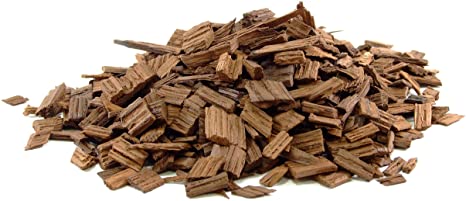We often hear wines, especially Chardonnays from California, referred to as “oaky”, and in my recent wine tasting event it came up as a question. What are oak flavors and why are they found in some wines and not others?

Winemakers use oak to create specific flavors and charatceristics in wine. It can lend toast, vanilla, smoke, cigar box, and leather notes to the wine, and these flavorsd can be slight or pronounced depending on if the oak is new or old, and how long the wine has been in barrel.
On the other hand, the wine can have very woody, smoky notes that may not seem to harmonize if it is a less expensive wine, where winemakers have used oak chips or staves soaking in the stainless steel vat to give oakiness to a wine at a fraction of the coast. Oak barrels, especially French oak, can cost in the hundreds of dollars easily.

Because oak is a porous wood, wine in a barrel has some contact with oxygen through the pores in the staves. This allows the wine to oxidize, and often white wines that have seen oak have a golden rather than lemon color. The color difference is more difficult to see in red wines. The slight oxidation can soften tannins and give body to a wine, especially the longer it is in the barrel. It can add character and finesse to a wine.
When a winemaker wants to preserve the fresh primary fruit flavors of a wine and keep crisp acidity, oak is not usually a good choice. Aromatic grapes like Sauvignon Blanc or Muscat may not do well with oak because it can compete with the flavors, although some winemakers use old oak, which rarely imparts and flavors, to create smoother body and richness in the wine.
So if you try a wine and get toasty, vanilla, smoky or caramel flavors, you can probably say you are tasting the influence of oak. A good way to experience this is try an oak and unoaked Chardonnay side by side. You will tell the difference quite quickly!
Cheers!



